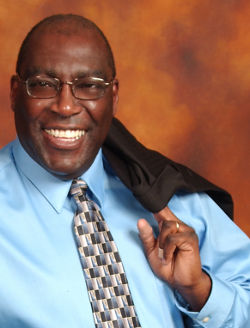The Three-Dimensional Leader: Negotiating Your Mission, Resources and Context (tells how Giants’ coach, Tom Coughlin, transitioned to flexibility during their 2007 championship season. A 3-D MRC core value is “Friendly, Flexible Fellowship” (pages 244, 256-257). This means churches should be inviting and accommodating and treat others the way we’d like to be treated. Training on the Team-Behavioral Matrix (page 246-250) explains that “accommodating” means being flexible within reason and in ways that do not compromise the Gospel and Biblical doctrines.
1 Comment
Change The Church’s Methods Not The Message
To assist a church to change its trajectory from declining attendance, I ask: “Why do people come to church?” I then walk people through thinking about their answers to determine if what they are doing and providing positions them to be the kind of church people will want to attend. I affirm we are not talking about compromising on the Word of God or issues related to what the Bible identifies as the essentials of Christian faith. Change focuses on matters of style regarding how we express these essentials. Mission (not me) Matters Most I help church leaders to identify what matters most and how to avoid getting bogged down in trivial matters that fail to address the changes necessary to become the kind of church that is more meaningful to true believers and seekers within their communities. Often the identification process takes 4-8 hours. Walking out the processes that implement the changes takes six months or longer. A significant early goal is for leaders to identify why people would come to church as opposed to what we want them to prefer, so they will come to our church. Leaders Make or Break Change The Three-Dimensional Leader: Negotiating Your Mission, Resources and Context identifies leadership styles based upon those within the book of Judges. One-dimensional Samson-type leaders do not see how to use their great personal gifts to fulfill organizational objectives. Two-dimensional leaders understand the mission, but fail to align resources into processes that effectively achieve it. The Context for Church Change Three-dimensional leadership processes help us obtain an objective ten thousand foot view of the context to rise above the presuppositions and personal preferences that undermine the organization’s ability to thrive. Church decline indicates challenges to achieve The Great Commission, the success and failure of which determines the salvation, outlook, values and direction of entire civilizations. The mission to “go into all the world” is one worth getting right. Three-Dimensions of Leaders
Samson behaved as if he was the only one that mattered. Leaders like Samson have great personal gifts, skills and abilities, but fail to do what the organization needs from one in their position. Consequently organizations fail to achieve their potential. Many leaders are like Samuel, who was a good and godly person, but who never achieved organizational synergy by getting effective collaboration throughout all its branches and levels. Leaders like Deborah understand the value of empowering people by believing in and trusting them with responsibilities, as opposed to merely assigning them ministry tasks like they are odd jobs. The Three-Dimensional Leader says “III-D’s master the art of delegation with accountability absent of micromanagement.” Rallying God’s Resources As a church leader, you may be saying to yourself, “People have burned me.” “I can’t trust them.” “They learn a few things; get ordained and then leave this ministry to go off and do something else or become a competitor.” Even though some of what you may be thinking and feeling is true, we need to work in ways that make the body-of-Christ as robust as possible. Mission (not me) Matters Most Want to lead with a compelling Christ-centered vision that people make a commitment to? Want to be able to invest in your congregation, so they experience continual growth and thus are equipped to accomplish what brings the vision to reality? Three-Dimensional leadership principles will help those who attend your church to see a vision that goes beyond “I want people to show up on Sunday morning to listen to and admire what I do.” Read - Learn - Lead Three-Dimensional Leadership achieves body-of-Christ dynamics that continually transforms the people-resources who negotiate the context to fulfill the Great Commission. Churches Free from Fearing Government
The Founding Fathers never regulated or taxed churches, which they considered "Free Churches." Thus they wrote into the US Constitution “congress shall make no law respecting (favoring) or prohibiting (limiting) the free exercise of religion.” America’s Founding Fathers developed this nation as an expression of how Christ taught us to pray (and advocate for) "Thy will be done on earth as it is in Heaven" (Matthew 6:10). American society became an example (though not perfect) of how diverse people can live in harmony, consenting to Biblical principles. Compare how we live in the "United State of America" relative to the “chaotic-states of the world” where governments control religion and thus public behavior. 501c3 a Binding Bowl of Porridge? In 1954, politicians conspired to stop churches from influencing government by offering them the tax exemption they already enjoyed in exchange for giving up their first amendment right “to petition the Government for a redress of grievances." Churches acquiesced the role of being the conscience of government which needs the guidance of Biblical values. Religion and Politics This led to government’s proneness toward corruption. Satan works hard to influence government because with the swish of a pen officials can make laws that put millions of people onto paths that violate God’s plan for our lives. Jesus paid taxes (Matthew 17:20), and John The Baptist expected government leaders to obey Biblical principles, and he challenged Herod (Matthew 14:3, Mark 6:18 and Luke 3:19). Though John’s death resulted from the pressures he exerted on Herod, Jesus said, "Among those born of women, there has not risen anyone greater than John the Baptist (Matt 11:11). John wanted Herod to repent and save his soul, and others' lives. How then should we pastor America? ADDITIONAL READING http://hushmoney.org/501c3-facts.htm From the Forward of In Caesar's Grip, by Peter Kershaw http://www.freerepublic.com/focus/news/765344/posts http://www.freerepublic.com/focus/f-news/2783186/posts http://discussions.godandscience.org/viewtopic.php?f=12&t=33599 Calling for Change
People throughout the world are longing for change. Bill Hybels says there is no other organization on earth that can accomplish within the human heart the amazing life-changing transformations that Christ works through His Church. Changing You Changes Culture In the church:
Leading the Church’s Corporate Change Continuum Our role as leaders within God’s church is seeing not only where people are, but what God is moving them to become. Our vision for people should transcend them merely coming to admire what we provide on Sunday mornings. We need to have God’s heart for what they will do with their transformed lives. The Three-Dimensional Leader (http://bit.ly/3DLeaderBk) instructs us how to value and assess not only what people can become, but also the process steps that help them get there. Reaching Collective Potential The Body of Christ achieves robust synergy when our ever developing gifts are deployed into effective church ministries. Since few do things well the first time we try them, trial and error must be factored into the change continuum process. Are you seeing your congregation in 3-D? |
3-D Church & Non-Profit Blog in 333 Words or LessThis Blog provides information to help you and your organization achieve great mission focus, team behaviors and organizational processes in 333 words or less. Archives
September 2013
Categories
All
Earl Wallaceis available to consult, come to your organization or meet with your leaders via conference calls and web-based meeting forums.
|


 RSS Feed
RSS Feed
